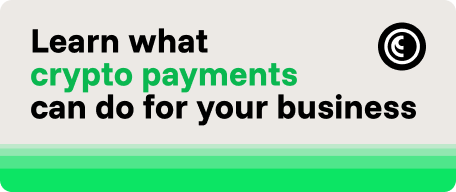Tokenized Real Estate: Sachin Joshi on RWA, Web3, and Fractional Ownership

Real estate has always been considered the most grounded of asset classes – brick and mortar, slow-moving, heavily regulated. But in 2025, that perception is shifting fast. Enter tokenization: the process of turning real estate into digital assets that can be fractionalized, traded, and owned globally using blockchain infrastructure.
One of the people helping shape this transformation is Sachin Joshi, a Co-founder of Alt DRX, an emerging tokenization platform in India and part of the Digital Asset Labs under Qatar Financial Centre (QFC). His work focuses on building compliant infrastructure for tokenized real estate investment models and regulated SPV structures in emerging markets. With a background in financial engineering and digital infrastructure, Sachin is on the frontlines of designing regulated, blockchain-native models for tokenized real estate – not just theory, but implementation.
We caught up with him to talk about:
- Where the tokenized real estate market stands today (and where it’s headed)
- Which countries are making the smartest regulatory moves
- Why fractional ownership and early liquidity are opening new doors for developers
- How FIAT and crypto payment rails coexist in modern real estate tokenization
- What still needs to change before mainstream adoption can happen
Global Trends in Tokenized Real Estate and Market Outlook
How would you asses the current state of the global tokenized real estate market?
We’ve moved well past the proof-of-concept phase. It’s more promising than ever – but we’re still building the foundations.
What started as a fringe concept back in 2018 has now become an emerging sector backed by institutional-grade infrastructure. The global tokenized real estate market is projected to reach $2 to $2.5 trillion by 2035, driven by real-world adoption and the broader growth of the tokenized RWA market, which surpassed $25 billion in 2025.
We’re seeing programs from institutions like BlackRock, J.P. Morgan, Ripple, and Polygon, which have lent credibility to the space. But it’s not just about numbers. This shift is underpinned by increasing comfort with blockchain-based ownership structures, improved compliance frameworks, and better digital onboarding experiences. Smart contract automation and programmable compliance are making end-to-end tokenized transactions more efficient than ever.
That said, infrastructure challenges persist: regulatory fragmentation, jurisdiction-specific KYC/AML standards, a lack of secondary market liquidity, and uncertainty around how tokenized assets interact with property law. The evolution is promising, but the groundwork still needs to be finished. We’re in a growth phase, moving toward long-term integration. The industry is moving beyond experimentation to institutional-grade deployment.
As someone directly involved in the market, which countries would you highlight as successful examples of real estate tokenization, and why?
Several markets are standing out for their proactive legal frameworks and digital asset ecosystems.
Dubai is a clear leader. Agencies like the Virtual Assets Regulatory Authority (VARA) and Dubai Land Department (DLD) are integrating blockchain with property registries and actively supporting tokenization pilots. It’s one of the few places experimenting with title-level tokenization in a regulated context, offering a future-forward model for digital title deeds.
Switzerland has long provided regulatory clarity through FINMA, offering a mature ecosystem for security tokens and digital securities. These markets have made notable strides in enabling secondary trading through regulated token exchanges.
Singapore, under the leadership of the Monetary Authority of Singapore (MAS), has established itself as a global hub for digital asset innovation by enabling full-stack digital securities issuance within a robust regulatory framework. In Qatar, the QFC is actively advancing real-world asset (RWA) tokenization through its Digital Asset Labs initiative.
Alt DRX is proud to be a participant in this ecosystem. We’re developing a tokenized services platform under QFC guidelines to provide digital asset tokenization solutions for real estate developers and financial institutions in Qatar. The QFC’s structured environment supports compliant token issuance and paves the way for secure, cross-border real estate investment opportunities.
While our tokenization infrastructure is being built in collaboration with QFC, the Alt DRX platform is headquartered in India, positioning us at the intersection of two dynamic and rapidly evolving markets in the Web3 and property tech space.
India’s IFSCA has also introduced a detailed consultation paper to create a framework for tokenizing real-world and financial assets through GIFT City. It’s an important milestone for blockchain in one of the world’s largest emerging markets, signaling that real estate tokenization could soon be embedded in South Asia’s institutional finance stack.
These jurisdictions are aligning three things: regulatory clarity, technical infrastructure, and financial structuring. That alignment is essential to moving from theory to implementation.
Blockchain Infrastructure, Legal Compliance, and Adoption Barriers
What technologies and legal frameworks help make tokens equivalent to traditional ownership rights and ensure regulatory compliance?
One of the biggest challenges in RWA tokenization is bridging the gap between digital tokens and traditional ownership rights. To make tokenized real estate feel as legitimate and secure as conventional ownership, you need three things working in harmony: solid tech infrastructure, strong legal wrappers, and clear regulatory alignment.
It all starts with user experience. Buying a digital asset token should feel as intuitive and secure as buying a stock or mutual fund online – fast, transparent, and backed by proper financial structuring. Investors need to know that what they’re buying is legally sound, managed responsibly, and offers the same protections they’d expect in traditional markets.
On the tech side, blockchain networks serve as a tamper-proof ledger for recording ownership. Smart contracts automate investor rights, like income payouts, voting privileges, or transfer restrictions, without the need for intermediaries. Platforms also integrate identity verification (KYC/AML), whitelisting, and permissioned access to ensure only eligible, verified participants are involved.
Legally, most tokenized assets are issued through Special Purpose Vehicles (SPVs) or Trusts that hold the underlying real estate. Token holders then receive enforceable rights, like profit-sharing, redemption, or voting, through their stake in the SPV, aligning the structure with existing securities and property laws.
Globally, jurisdictions like Singapore (MAS), UAE (VARA), Switzerland (FINMA), Qatar (QFC – Digital Asset Labs), and India (IFSCA via GIFT City) are taking the lead in building regulatory frameworks for digital securities. These structures define how tokenized assets must be issued, managed, and traded, making token-as-security models not only legally viable but also scalable.
In short, when you align blockchain technology with enforceable legal design and forward-thinking regulation, tokenized assets can deliver the full functionality of traditional ownership, plus the added benefits of transparency, efficiency, and global accessibility.
Real Estate Tokenization Use Cases and Investor Benefits
What opportunities does tokenization create for real estate developers and agencies?
Tokenization is unlocking new capital inflows by enabling developers and asset owners to bring a wider variety of assets to market. By fractionalising ownership and distributing asset-backed tokens via regulated SPVs, developers can sell their assets more efficiently.
For real estate agencies and asset managers, tokenisation introduces an entirely new asset class that caters to a younger, digitally native investor base seeking transparency, flexibility, and cross-border access. These tokenized listings not only enhance deal flow but also create recurring revenue opportunities from the transaction fees, resale activity, and investor engagement. In effect, tokenisation is not just modernizing capital formation – it is how assets are packaged, marketed, and owned.
Developers gain access to a broader pool of capital, while investors can diversify into real estate with lower minimums and clearer ownership records on-chain. It’s a model that unlocks capital efficiency and expands market participation. Additionally, projects that tokenize rental income streams or future cash flows can offer yield-bearing digital securities that match the profile of institutional-grade assets.
What are the main barriers preventing traditional real estate companies from adopting crypto and tokenization? Are there signs that these barriers might soon be overcome?
Old systems don’t change overnight – and real estate is about as old-school as it gets. The biggest barriers? Legal uncertainty and infrastructure gaps.
The primary challenge is legal and regulatory uncertainty. Property laws are domestic by nature, and many don’t yet accommodate tokenized ownership. Restrictions on foreign investment, lack of legal recognition for on-chain transactions, and fragmented KYC requirements all make it difficult to scale tokenized models.
Then there’s the technical gap. Many legacy firms aren’t equipped to manage smart contracts, digital custody, or token issuance processes. Concerns around compliance, liquidity, and counterparty risk also persist.
Still, progress is visible. Regulatory sandboxes, compliant SPV structures, and partnerships with fintech platforms are helping traditional firms experiment safely. The conversation has shifted from “what is tokenization?” to “how do we adopt this within our legal and operational frameworks?” Tokenization offers a bridge between the existing financial system and Web3-native rails.
Liquidity, Secondary Markets, and Crypto Integration in Tokenized Real Estate
One of the key benefits often attributed to tokenization is increased liquidity. What’s your take on that – does this claim reflect reality at the current stage?
Increased liquidity is frequently cited as a major advantage of tokenization, and while it holds strong theoretical promise, the reality at the current stage is more nuanced.
Tokenization does indeed introduce structural liquidity by enabling fractional ownership and reducing the traditional frictions of property transfers. Investors no longer need to buy entire properties; instead, they can acquire and trade fractionalized tokens, which opens the door to a broader investor base and, in principle, allows for quicker exits.
However, the actual liquidity today is still limited. While the total market for tokenized RWAs is growing rapidly, surpassing $25 billion in mid-2025, the secondary trading volumes remain modest. This is primarily because:
- Secondary markets for tokenized real estate are still in early development, with limited depth and participants.
- Market makers and liquidity providers are just beginning to engage with these assets, especially within Web3-native platforms.
- In FIAT-based ecosystems, infrastructure and regulatory clarity around trading tokenized assets are still evolving, which slows broader adoption.
That said, there are positive signs. Web3-native platforms are creating the rails for peer-to-peer liquidity, and new entrants – both centralized and decentralized – are launching marketplaces specifically for tokenized RWAs. Institutional interest in making markets around compliant tokens is also gaining traction.
In conclusion, while tokenization is laying the foundation for increased liquidity, it is not yet fully realized at scale. Continued development of regulated exchanges, liquidity protocols, and cross-chain interoperability will be key to unlocking this benefit in practice.
What are the main advantages of tokenization for investors? For example, how strong is the demand for fractional ownership among end users?
Tokenization is opening up private markets in a way we haven’t seen before. What used to be the domain of institutional investors – premium real estate, infrastructure, and other high-value assets – is now becoming accessible to everyday investors through fractional ownership. That’s a big deal. It means retail investors can finally get a piece of deals that were once completely out of reach, while asset owners gain new ways to monetize or exit their holdings without waiting for a full acquisition or refinance.
What makes this shift even more powerful is the flexibility it introduces. With tokenized assets, investors can buy fractional shares and – crucially – trade or exit those positions more easily. It’s a blend of prestige and liquidity: owning a stake in a premium real estate project while still having the option to rebalance or partially cash out.
But the value goes deeper than access and flexibility. Tokenization adds structure to previously illiquid assets, using compliant legal frameworks and regulated SPVs. Platforms are integrating robust KYC and investor verification tools to make sure the ecosystem remains secure and compliant. And it’s working – the demand for fractional ownership keeps climbing.
As of mid-2025, the tokenized RWA market has reached an estimated $24 billion, according to analytics provider RWA.xyz. That growth reflects both improving regulatory clarity and growing investor appetite for alternative assets. As digital platforms continue to evolve and new marketplaces come online, fractional ownership is quickly becoming the preferred entry point for the next generation of investors.
How active is the resale market for tokenized real estate today? Perhaps you could share some insider insights on that topic.
Still early, but evolving. Most resale activity is happening at the institutional level with income-generating assets. Retail platforms are coming online, but there’s an imbalance: buyer interest exists, but asset sellers aren’t listing them for tokenisation yet.
A real retail resale market will emerge when platforms make it easy for asset holders to list, and buyers can trust the quality and legal backing of the token. Once that inventory becomes more dynamic, we’ll see a much more vibrant secondary market.
Web3-native and FIAT investors are already prepared to engage, but the supply side needs to catch up. Marketplaces need to prioritize compliance, transparency, and liquidity incentives to attract both sides.
Many large-scale tokenization projects, including Alt DRX, don’t use cryptocurrencies, even though crypto-native users tend to be more receptive to tokenization. Why do you think that is? And do you see demand from your users for adding this option?
Tokenization and cryptocurrency are often conflated, but they’re different concepts. Blockchain is the common foundation, but tokenization doesn’t require crypto payments to function.
At Alt DRX, for example, we use fiat rails for compliance and legal certainty. Real estate is tightly regulated, and jurisdictions often require identity verification, KYC/AML, and source-of-funds documentation that’s harder to standardize with crypto payments. Using fiat simplifies legal integration with local land registries and securities laws.
That said, demand for crypto integration is growing, especially among Web3-native investors and international buyers. The real innovation is on-chain ownership and smart contract automation – the funding layer should offer optionality, not constraint.
Crypto isn’t the default – it’s a vehicle. Tokenization is about digital proof of ownership. The funding layer should be flexible, but the legal structure has to be robust.
What’s your outlook for the tokenized real estate market in the near future? In your view, what are the main growth drivers – and the key obstacles still standing in the way?
Real estate tokenization is no longer speculative. The infrastructure is maturing, the regulations are catching up, and the interest is sustained across institutional and retail segments.
We’re in a transition phase where early use cases are proving the model. The next few years will be about scaling: enabling seamless issuance, developing compliant secondary markets, and integrating with existing financial systems.
This isn’t about replacing traditional real estate. It’s about making it more efficient, accessible, and global. Tokenization has the potential to democratize access to real estate investment, modernize financing structures, and bridge Web2 and Web3 economies in a legally compliant, transparent, and scalable way.











